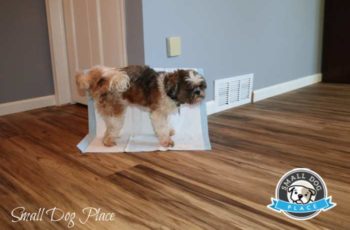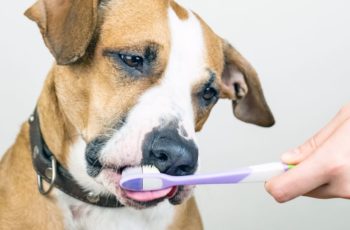A couple of months ago, I had the opportunity to visit a former coworker/friend I hadn’t seen for a decade or more. He had invited me to a party he throws annually – one that I had declined with regret every year, because he lives in Kansas and I live in California. But what with the sudden loss of a beloved family member, vaccination against COVID, and the opening up of restrictions on gatherings, I decided that life is too short to turn down invitations like that. I flew to Kansas, went to the party and stayed for a couple nights with my friend and another of our coworkers from 25 years ago. It was wonderful to catch up with both friends and to compare notes about our lives, a quarter-century down the road.

When I booked the trip, I gave myself a couple of unscheduled days to decompress and do whatever I felt like. After I said goodbye to my friends, I spent a day driving through the tallgrass prairie range in east-central Kansas. The endless green grass, the matchless blue sky, the billowing white clouds … it was so healing (especially since, back at home, our sky was smoky from wildfires and the drought has everything looking very brown).
Eventually (like, after half a day, lol) I started feeling too self-indulgent; I should do some work while I was out there. I ended up touring through a town where there are several dog-food manufacturing plants (Emporia), and visiting the animal shelter there. As a long-time shelter volunteer, I love visiting other shelters; folks who do the same things in different places do them in different ways and I always see something interesting to try back at home.
I also called a friend, Dr. Greg Aldrich, a professor at Kansas State University and founder of that school’s Pet Food Program, to ask him what other dog-food-related tourism I ought to take in. He tried to pull a few strings to see if he could get me into any production facilities where he had connections, but the COVID restrictions were still limiting visits at each place he tried. However, in a generous act, he invited me to K-State and said he’d give me a tour of the Pet Food Program’s facilities.

I headed to Manhattan, Kansas, and had just enough time to spend an hour visiting that town’s animal shelter before it closed. What I loved most at that shelter: The friendly, humorous, and encouraging signage in the shelter, which showed their commitment to giving each ward some individual attention, and invited visitors to engage with the shelter in any way possible; and the HUGE wooded play yard that was directly outside the dog kennel’s back doors. Staff and volunteers can (and did, while I was there) just open a dog’s run, open the back door to that room, and allow the eager dog to ZOOM out the door and run and romp up and down a hill and among trees and grass to their heart’s content. What fun! No struggling to get a leash on a crazily over-eager dog so you can be dragged through corridors to get outside – just opening the kennel gate and then the door, and “Here you go!” I loved that setup.

After playing with some dogs, I found a hotel and settled in for the night. The next day, I met Dr. Aldrich (and his enormous silver Lab, Lucre, who gets to go to work with his dad) at K-State. He took me on a tour of the Pet Food Program’s school facilities, where undergraduate, Masters, and PhD students conduct hands-on research into pet food formulation and production. What an amazing program! Students who are interested in a career in pet food production can conduct research into formulation and manufacturing; the university has facilities for everything from grain-milling, meat-processing, freeze-drying, baking, canning, and extruding. Multiple laboratories exist for biological and chemistry tests. The students actually manufacture pet food under various conditions and with various ingredients and evaluate the nutrition in the resulting products.
Good For K-State, a K-State alumni magazine, describes the program this way:
“This program draws talent from many areas within the College of Agriculture such as grain science, agricultural economics, animal science and food science. Engineering and veterinary medicine faculty and students also collaborate with the pet food program, along with foods, nutrition, dietetics and health in the College of Health and Human Sciences.”
Dr. Aldrich ordered a stack of pizzas and hosted an impromptu lunch for me and the graduate students who were around campus on this summer day. He invited them to introduce themselves to me and describe their goal in the pet food industry. I was so impressed with their interest and passion for pets and pet food, and fascinated with the projects they were working on for their various Masters and PhD projects.
While I met only graduate students, the K-State program also has offerings for undergrads, including a pet food minor and an option within feed science and management.

Dr. Aldrich says the one thing the program could use is more students. “Kansas has declining enrollment numbers for students of college age, yet the industry is asking us for more and more young people to come work for their companies,” he told me.
According to Good For K-State, the U.S. is the largest market in the world for pet food, a $33 billion business annually.
Dr. Aldrich had another meeting and the students had to get back to their projects. I thanked them all and hit the road again. I had a few more hours to kill before I headed back to Kansas City to catch my flight home. I thought, I’ll go visit some pet supply stores! This is another habit I like to indulge when I travel. I love seeing the different products that are stocked by stores in different areas of the country; the food, toys, and even training gear are quite different!
Here was something else that was quite different: What I call “pet supply stores” in California are truly “pet stores” in Kansas; at least, the two I visited were. They actually sell puppies. Like, lots of puppies. One store had over 70 puppies; the other had nearly 50.
The only way that there could be this many puppies in the same age range and of so many different sizes and breeds (and breed-mixes; they were not all purebreds) in stores in this many numbers: puppy mills, which are apparently thriving in some parts of the country.

I don’t know the answer. How can we produce enough dogs to satisfy demand without having to breed and sell them in this way? I can’t imagine how harmful it is to their development to have to live for any length of time in those tiny wire-bottomed enclosures, drinking from those horrible ball-bearing rabbit-waterers. And what happens to the pups who “age out” in the stores? Do they return to the puppy mills to be forced into a life of endless reproducing themselves? Ugh! I hated everything about these stores, and wish that no one bought pups this way.


